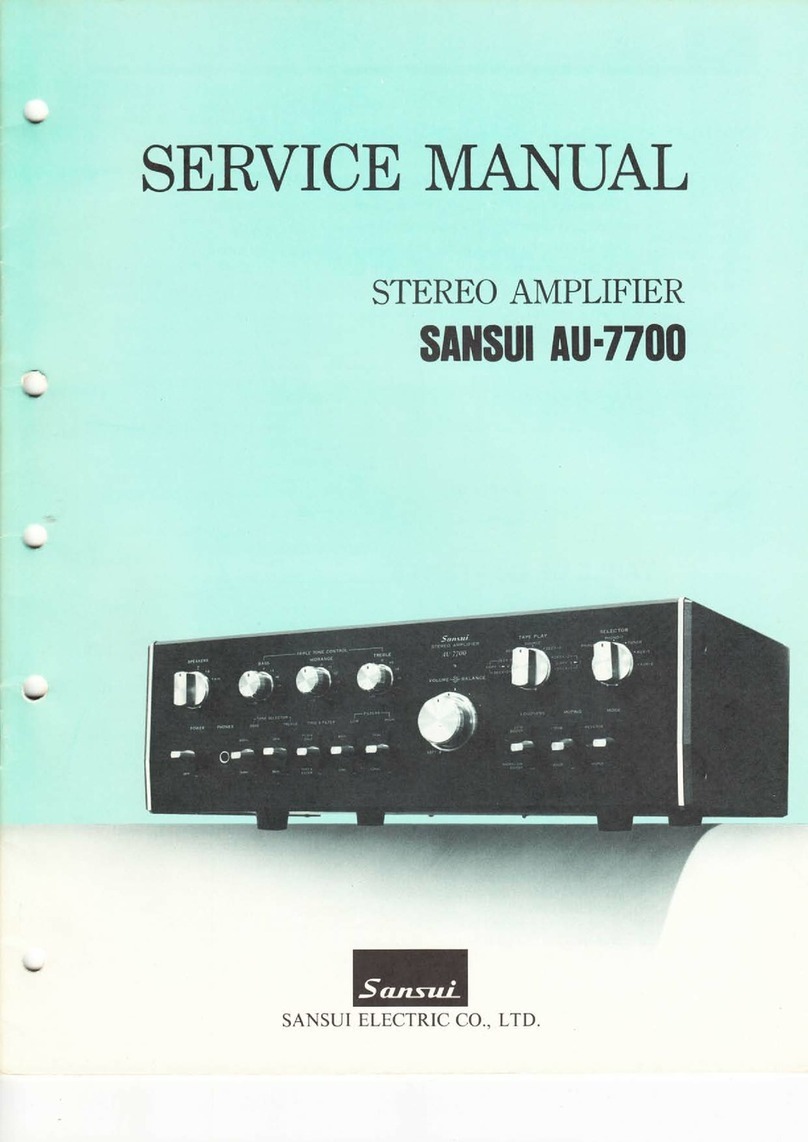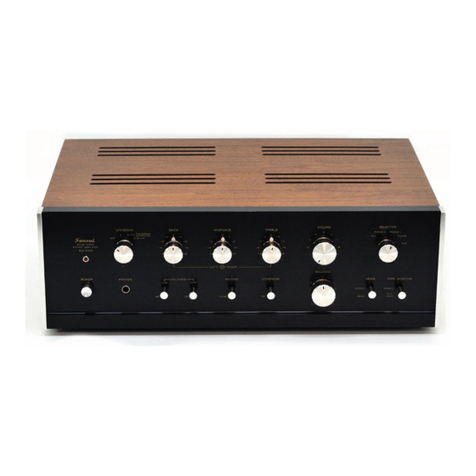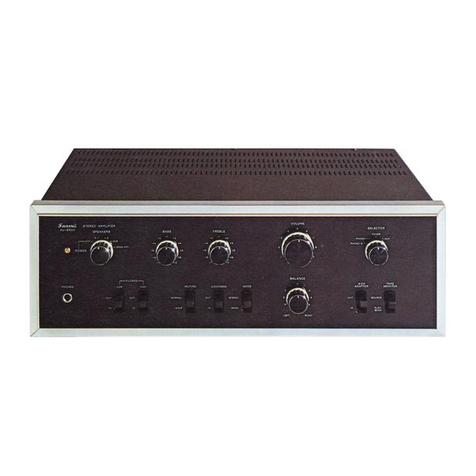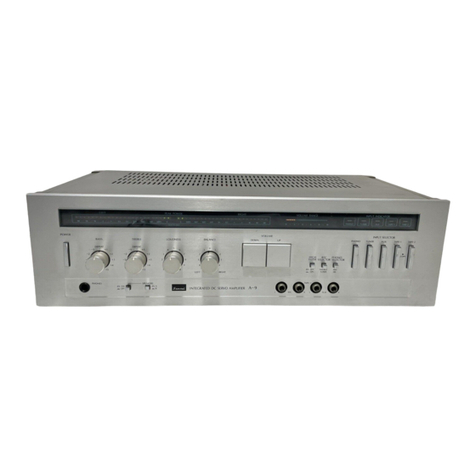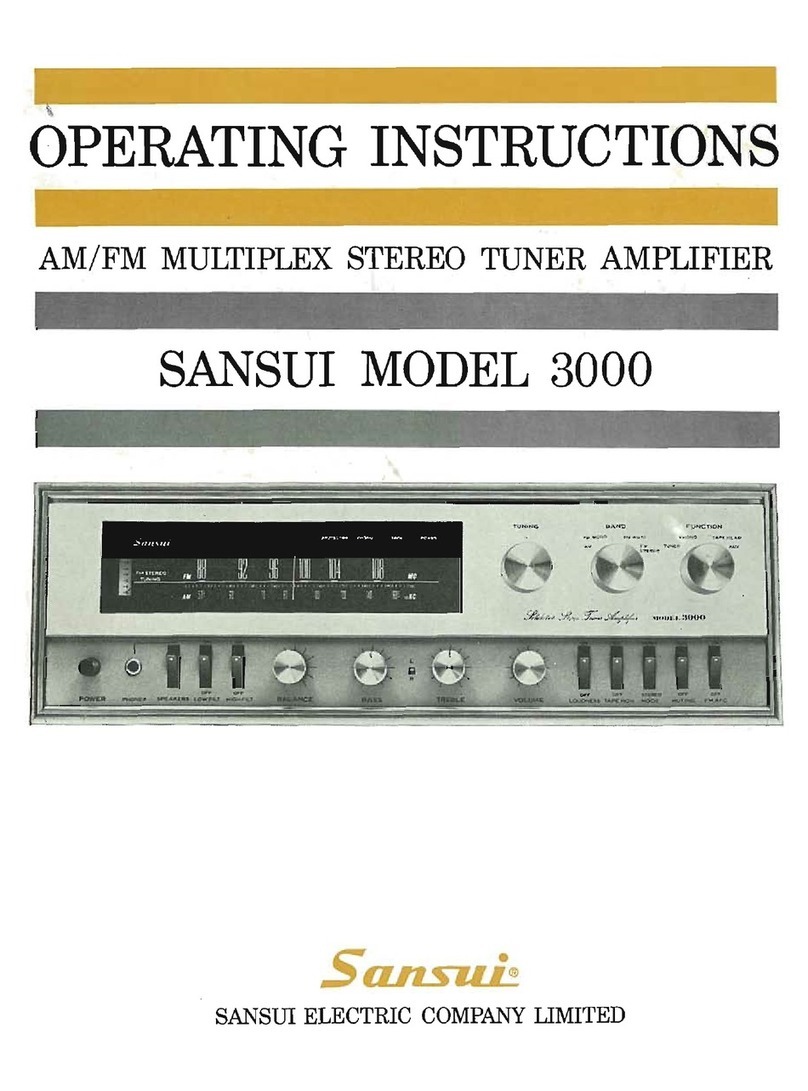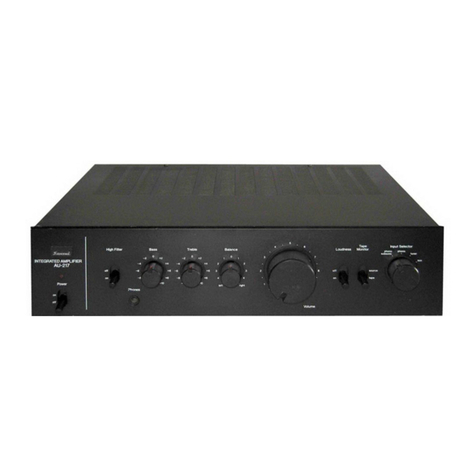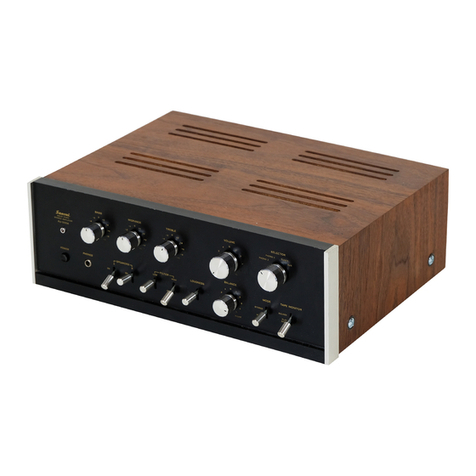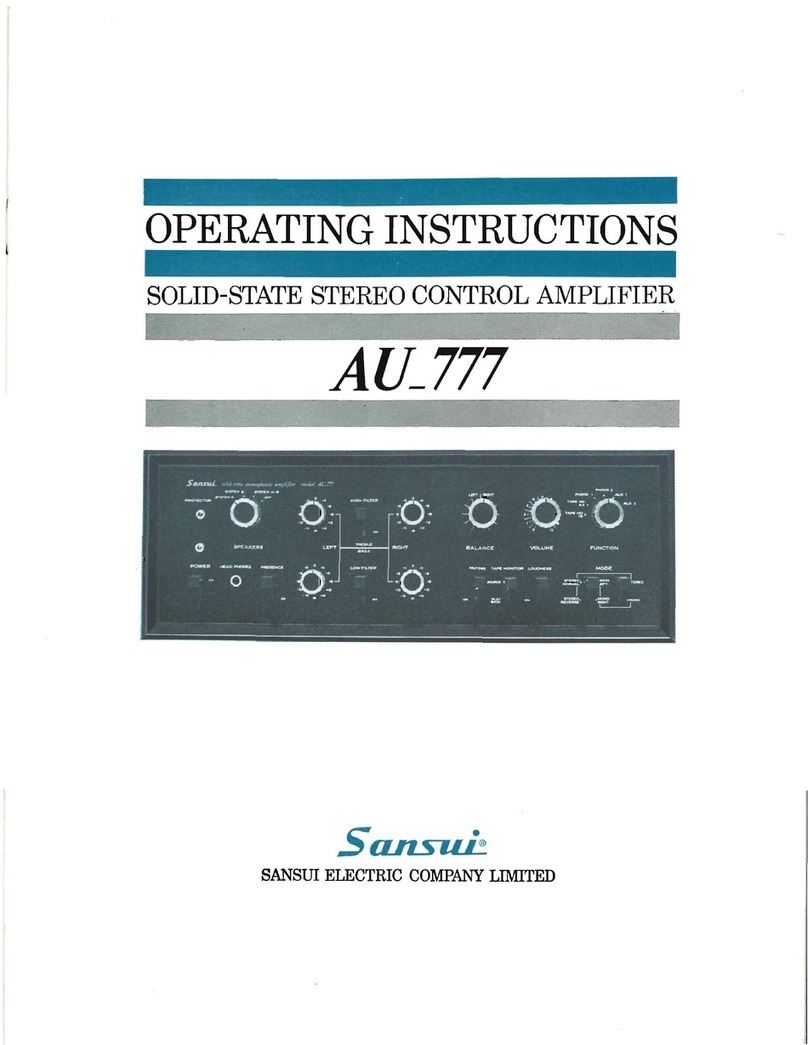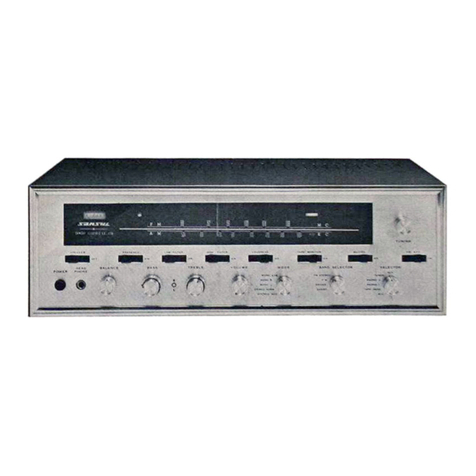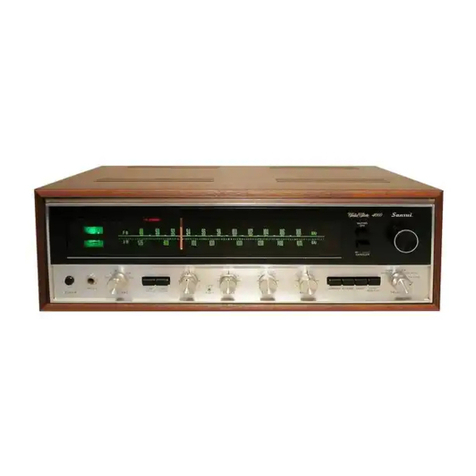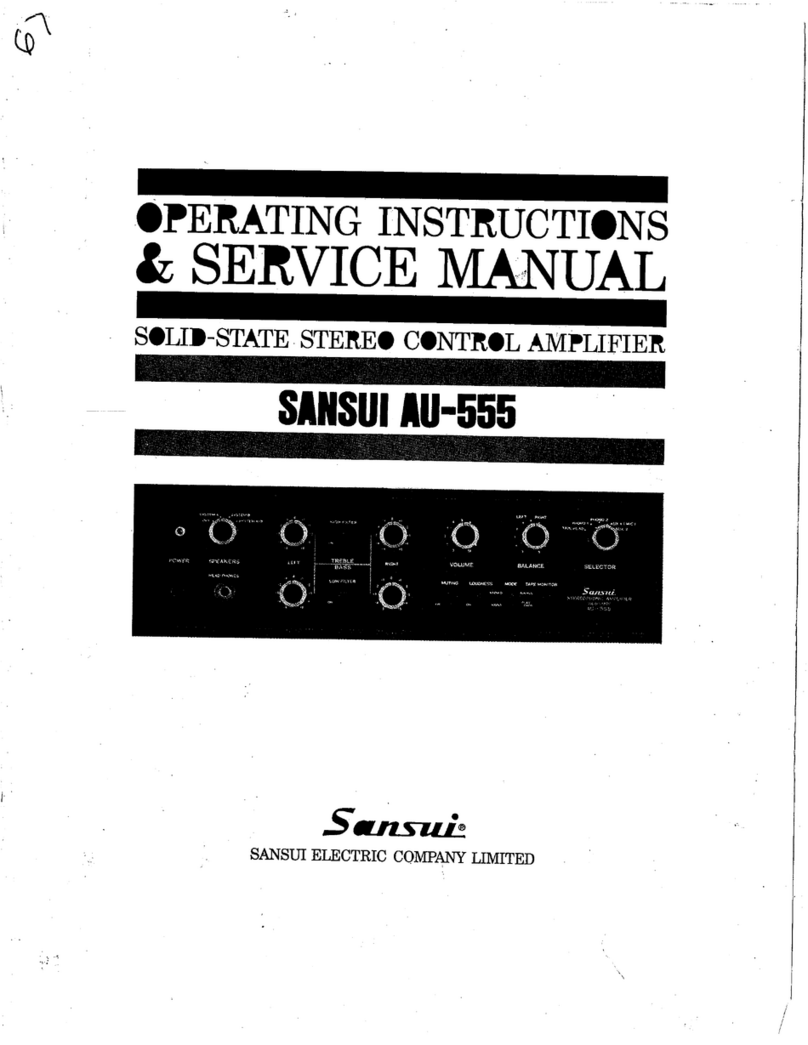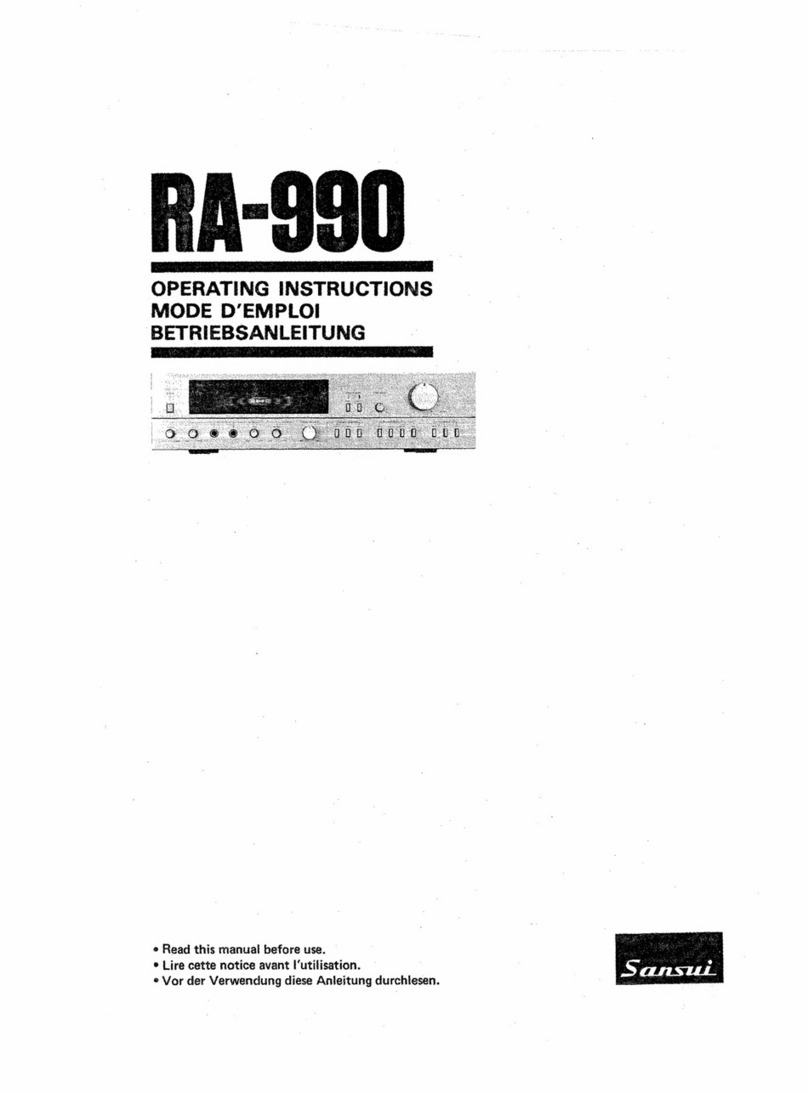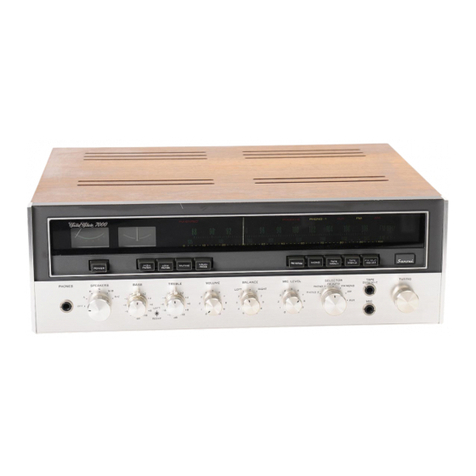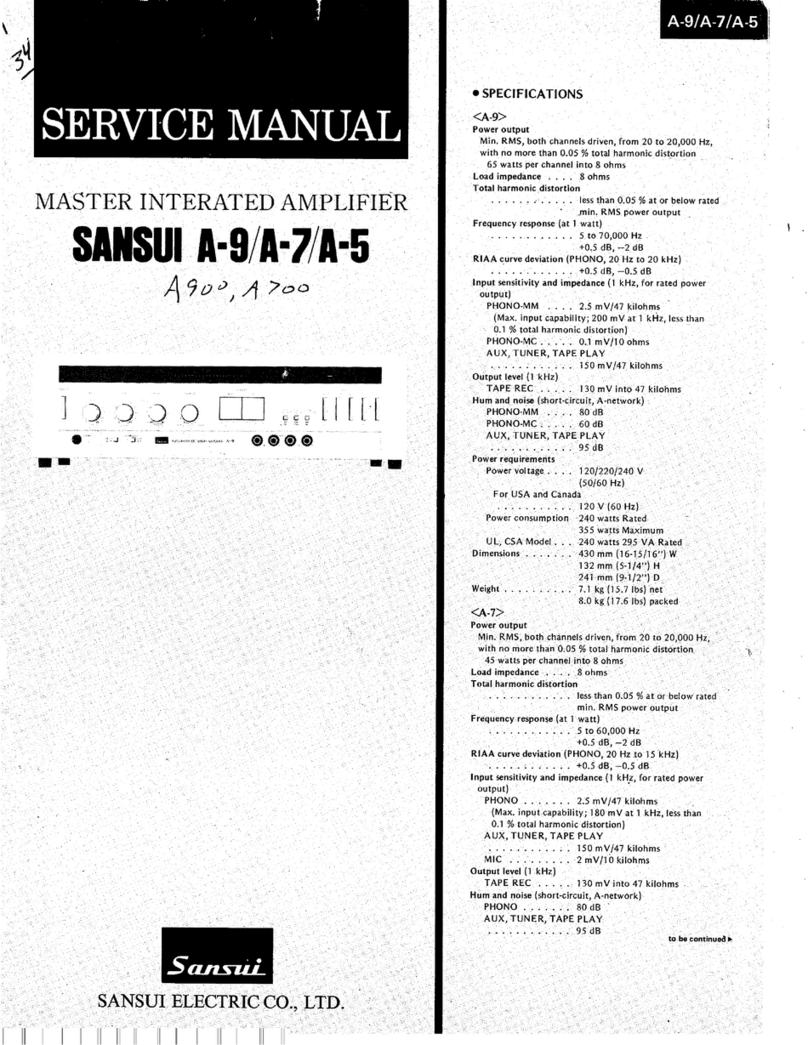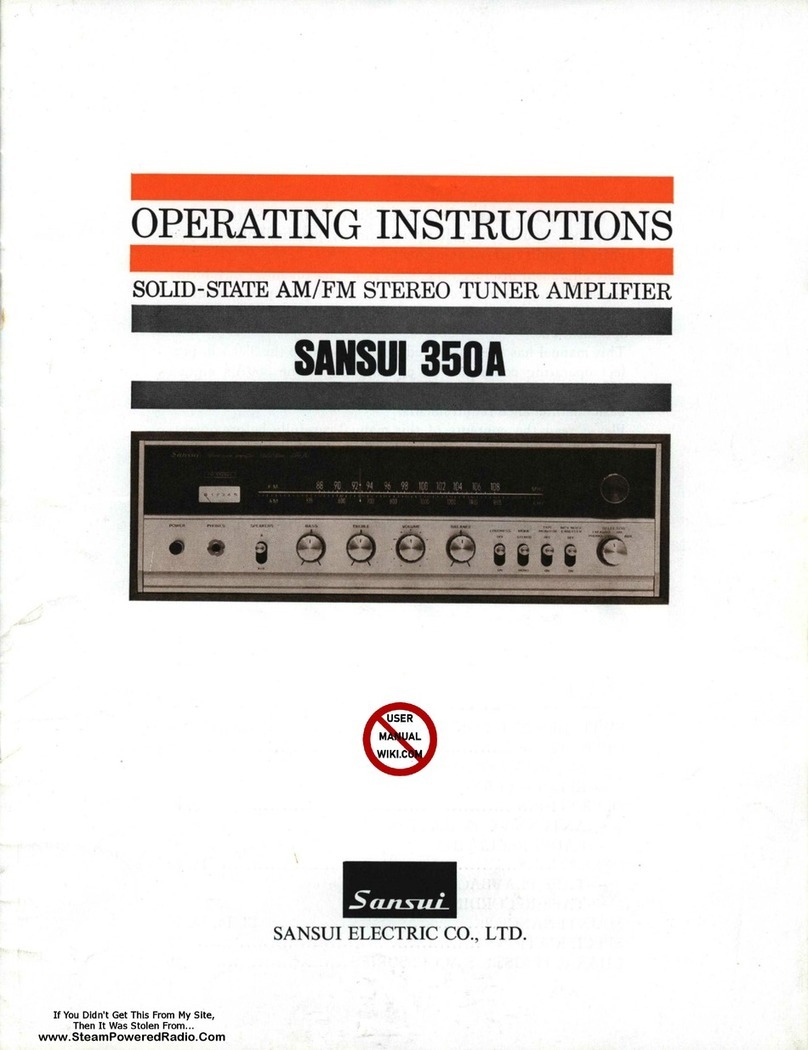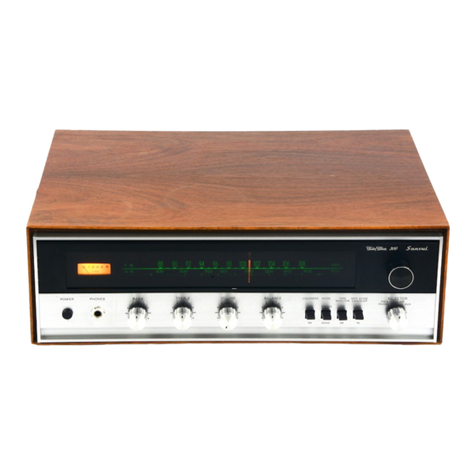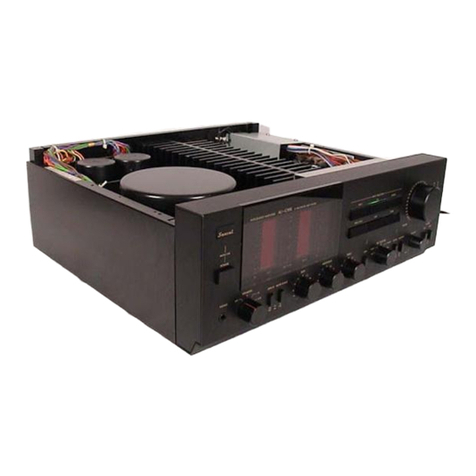
A909
OPERATING
INSTRUCTIONS-—
MODE
D’EMPLOIL~
BETRIEBSANLEITUNG
We
are
grateful
for
your
choice
ot
this
fine
Sansui
high
fidelity
product.
Before
you
operate
it,
we
suggest
that
you
read
this
booklet
once
through
carefully,
familiarizing
yourself
with
the
important
precautions,
operational
procedures
and
every
one
of
the
product's
many
features.
it
will
help
to
ensure
that
you
will
avoid
possible
damage
and
that
the
pro-
duct's
superb
performance
will
be
yours
to
enjoy
for
many
years
to
come.
Table
of
contents
Precautions
....
0.000...
00
0004
2
Connections...
........-2.02200-
3
Panel
information
.............0.
5
Operating
procedures
.............
8
Specifications.
.
2...
ee
12
©
The
Model
No.
and
Serial
No.
of
your
unit
are
shown
on
its
back
panel.
«Do
not
lose
the
Warranty
Card
that
carries
your
unit’s
Model
No.
and
Serial
No.
Nous
sommes
reconnaissants
pour
votre
choix
de
ce
produit
Sansui
d’une
remarquable
haute
fidéltité.
Avant
de
commencer
a
vous
en
servir,
nous
vous
recommandons
de
lire
cette
notice
complétement
et
soigneusement,
vous
familiari-
sant
ainsi
avec
les
précautions
importantes,
les
manceuvres
de
fonctionnement
et
chacune
des
nombreuses
caractéristiques
de
l'appareil.
Cela
vous
aidera
a
ne
pas
provoquer
d‘éventuels
dommages
et
a
vous
permettre
de
profiter
pen-
dant
de
longues
années
des
superbes
per-
formances
de
votre
appareil.
Table
des
matiéres
PRECAUTIONS
ewe
bok
ing
He
we
Se
2
CONNEXIONS
ysis
ee
we
ee
ee
3
Indications
sur
lepanneau...........
5
Procédésderéglage...........20.0.
8
Spécifications.
2...
0.0.0.2...
200.
12
®Le
numéro
du
modéle
et
le
numéro
de
série
de
!’appareil
sont
inscrits
sur
son
panneau
arriére.
@
Ne
perdez
pas
la
carte
de
garantie
ot
est
indi-
quée
le
numero
du
modéle
et
le
numéro
dans
la
série
du
type
de
I’appareil.
Wir
médchten
zu
dieser
Gelegenheit
unseren
Dank
aussprechen,
da
Sie
sich
fir
diesen
HiFi-
Baustein
von
Sansui
entschieden
haben,
Bitte
lesen
Sie
vor
der
Inbetriebnahme
des
Gerates
diese
Anleitung
sorgfaltig
durch,
um
sich
mit
den
wichtigen
VorsichtsmaRnahmen,
den
Be-
dienungsvorgangen
und
den
vielen
hervor-
rangenden
Eigenschaften
dieses
Gerates
vollstan-
dig
vertraut
zu
machen.
Mdgliche
Beschadigun-
gen
kénnen
dadurch
vermieden
werden,
so
da
Sie
das
hervorragende
Leistungsvermégen
dieser
Komponente
fir
viele
Jahre
geniekken
k6nnen.
Inhaltsverzeichnis
VorsichtsmaRnahmen
.........
Anschlusse.............00-
Bedienungsverfahren..........-
Technische
Daten
...........
ee
ae
wn
a
>
a
=
ot
o
ak
g
5
a
le)
3
3
a
Ge
fo)
3
NONWN
@Die
Modell-
und
die
Seriennumrmer
thres
Gerates
sind
auf
der
Geriteriickseite
ange-
geben.
©
Verilieren
Sie
bitte
nicht
den
Gararstieschein,
auf
dem
die
Modell-
und
die
Serie
nnummer
dieser
Einheit
angegeben
sind.
WARNING:
To
prevent
fire
or
shock
hazard,
do
not
expose
this
appliance
to
rain
or
moisture.
ATTENTION:
Pour
éviter
les
dangers
d’électrocution
ou
d’incendie,
ne
pas
exposer
cet
appareil
a
la
pluie
ou
a
I'humidité.
WARNING:
Setzen
Sie
diese
Gerat
zur
Verhiitung
von
Feuer-
und
Strom-
schlaggefahr
weder
Regen
noch?
Feu-
chtigkeit
aus.
